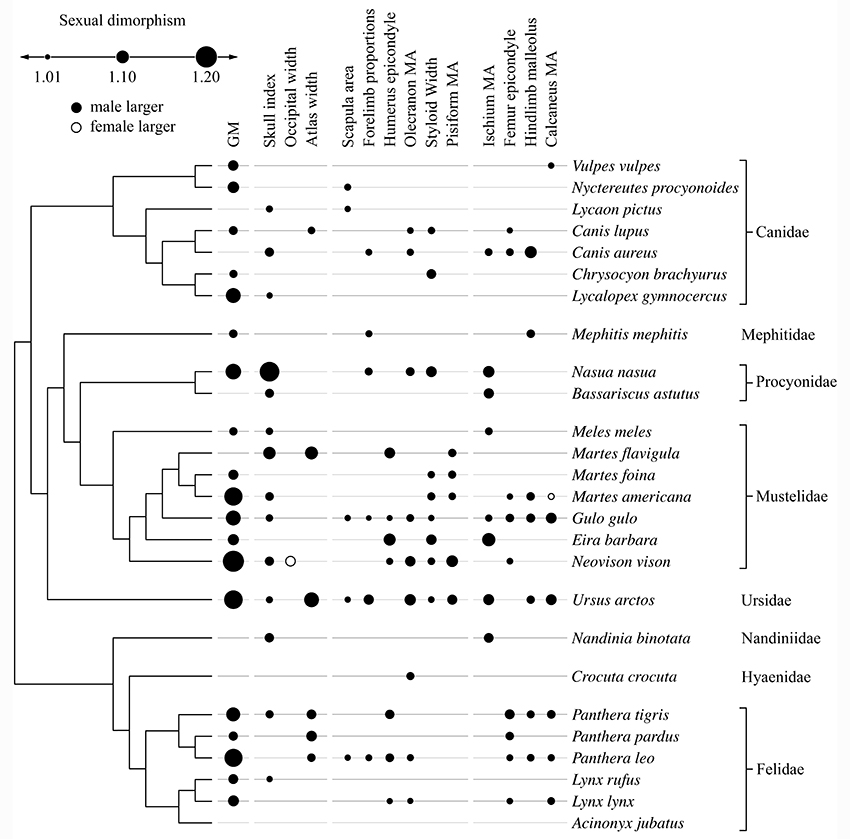
"When homologous characters in males and females vary similarly and are highly correlated genetically, the rate of evolution of sexual dimorphism may be one or more orders of magnitude slower than that for the average phenotype in a species" (Lande, 1980). If this is true, the presence of sexual dimorphism in a lineage communicates something important about the life history of that group. Among species of mammals, sexual dimorphism in which males are larger in size or have more prominant weapons is often associated with polygnous mating systems and relatively intense male-male competition.
OUR STUDIES
Morris, J. S. and D. R. Carrier. (2016). Sexual selection on skeletal shape in Carnivora. Evolution. Full text of this article in PDF
Carrier, D. R. and M. H. Morgan. (2015). Protective buttressing of the hominin face. Biological Reviews 90, 330-346. Full text of this article in PDF
Morris, J. S. and E. K. Brandt. (2014). Specialization for aggression in sexually dimorphic skeletal morphology in grey wolves (Canis lupus). Journal of anatomy 225(1), 1-11. Full text of this article in PDF
Chase, K., D. R. Carrier, F. R. Adler, E. A. Ostrander and K. G. Lark (2005). Interaction between the X chromosome and an autosome regulates size sexual dimorphism in Portuguese Water Dogs. Genome research 15(12), 1820-1824. Full text of this article in PDF
SELECTED RELATED STUDIES BY OTHER RESERCHERS
Lande, R. (1980). Sexual dimorphism, sexual selection, and adaptation in polygenic characters. Evolution 1980, 292-305.
Rogers, A. R. and A. Mukherjee. (1992). Quantitative genetics of sexual dimorphism in human body size. Evolution 1992, 226-234.